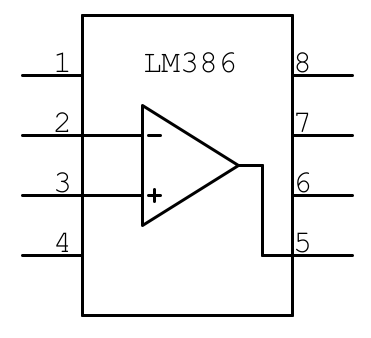Understanding and Implementing Operational Amplifiers
Operational amplifiers (op-amps) are fundamental building blocks in analog circuit design. They are versatile, high-gain differential amplifiers that can be used to perform a wide variety of signal processing tasks, including amplification, filtering, and mathematical operations. This article provides an intermediate-level guide to understanding and implementing op-amps in your circuits.
Basics of Operational Amplifiers
An op-amp has two inputs (inverting (-) and non-inverting (+)), a single output, and typically requires a dual power supply (+V and -V). The fundamental characteristic of an op-amp is its extremely high open-loop gain (A). This means that even a tiny difference in voltage between the inputs will result in a very large output voltage swing.
In practice, op-amps are almost always used with negative feedback, where a portion of the output signal is fed back to the inverting input. This feedback loop stabilizes the op-amp’s behavior and allows us to precisely control its gain and function.
Common Op-Amp Configurations
Here are some common op-amp configurations:
-
Inverting Amplifier: The input signal is applied to the inverting input through a resistor (R1), and feedback is provided through another resistor (R2) connected between the output and the inverting input. The gain of an inverting amplifier is given by -R2/R1.
-
Non-Inverting Amplifier: The input signal is applied to the non-inverting input. Feedback is provided through a voltage divider network connected between the output and the inverting input. The gain of a non-inverting amplifier is given by 1 + R2/R1.
-
Summing Amplifier: Multiple input signals can be summed by connecting them to the inverting input through individual resistors. The output voltage is proportional to the weighted sum of the input voltages.
-
Difference Amplifier: This configuration amplifies the difference between two input signals. It requires careful resistor matching to ensure accurate performance.
Practical Considerations
When implementing op-amps, it’s important to consider factors like input offset voltage, input bias current, bandwidth, and slew rate. These parameters can affect the accuracy and stability of your circuit.
Pro Tips:
- Use decoupling capacitors: Always place decoupling capacitors (e.g., 0.1uF ceramic capacitors) between the power supply rails and the op-amp’s power pins to filter out noise and ensure stability.
- Choose the right op-amp: Different op-amps have different specifications and characteristics. Select an op-amp that meets the specific requirements of your application in terms of bandwidth, slew rate, input impedance, and output current capability.
Tags: Analog, Op-Amps, Electronics, Circuit Design, DIY, Hardware
